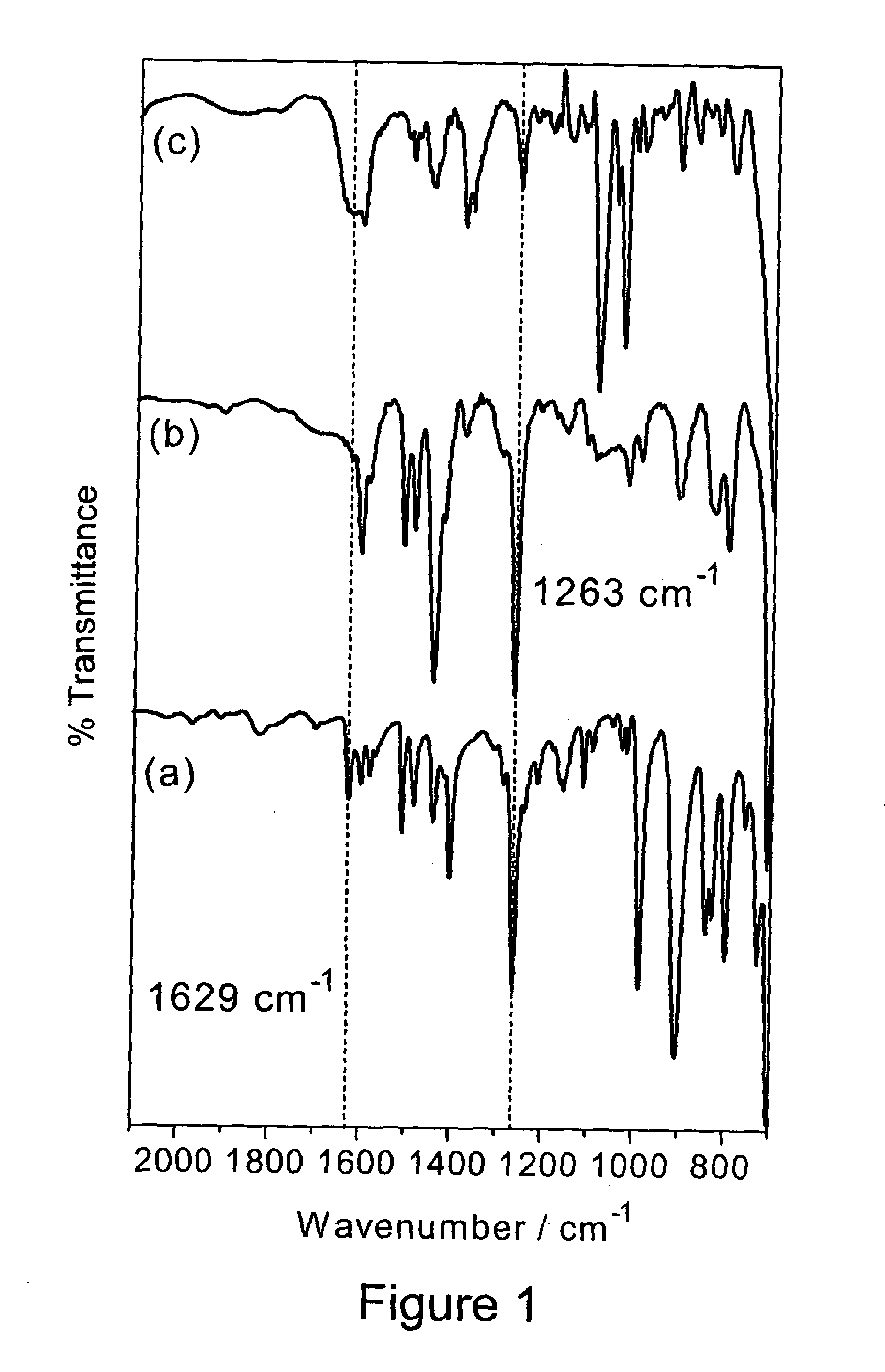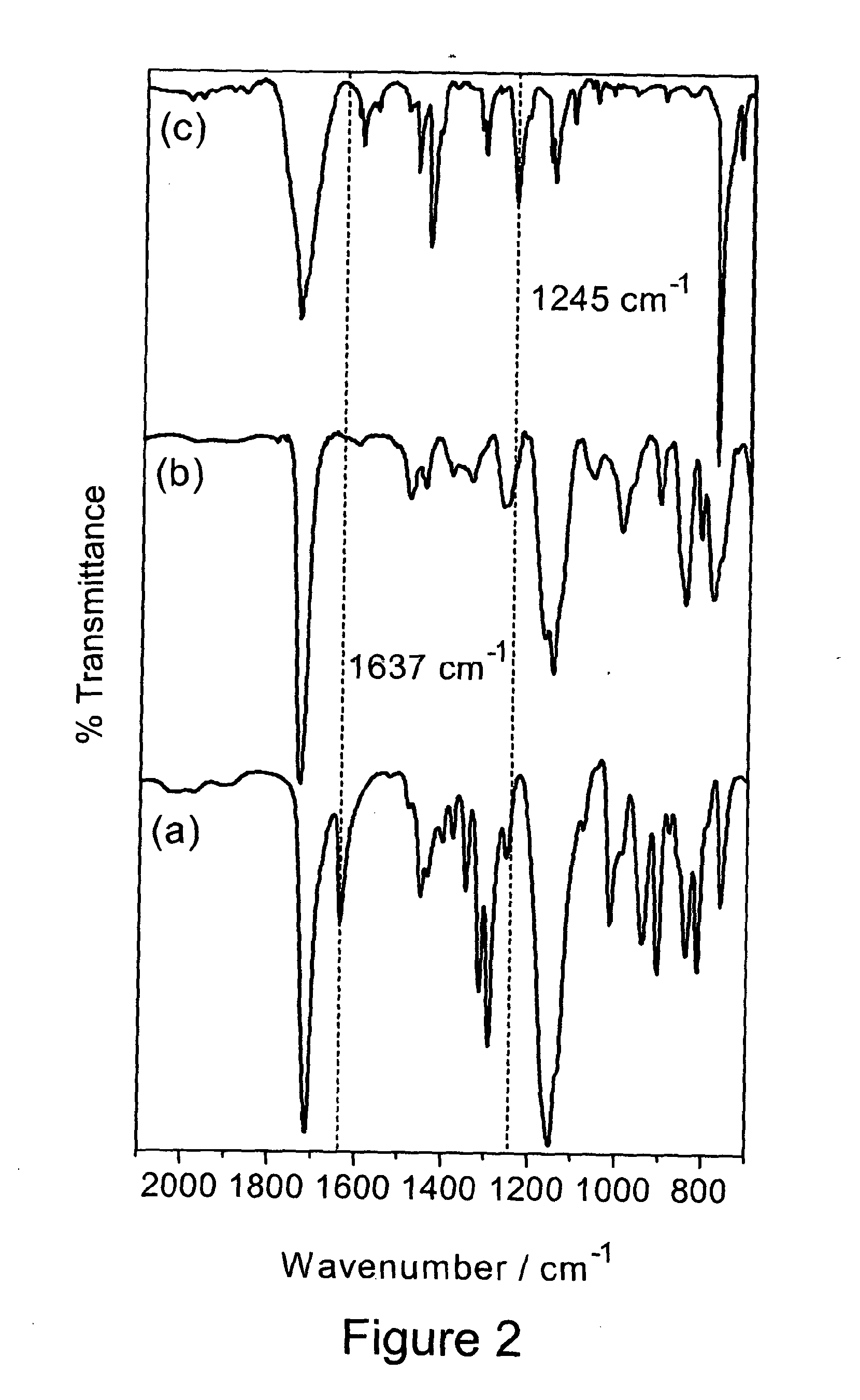Polymeric structure
- Summary
- Abstract
- Description
- Claims
- Application Information
AI Technical Summary
Benefits of technology
Problems solved by technology
Method used
Image
Examples
Embodiment Construction
[0085]In the present invention, controlled ATRP surface grafting of poly(glycidyl methacrylate) brush layers is achieved using plasma deposited poly(vinylbenzyl chloride) nanofilms. These are then derivatized with bromoacetic acid to introduce ATRP initiation sites along the polymer brush backbone needed for the subsequent ATRP grafting of poly(sodium styrene sulfonate) side chains (bristles), as illustrated in FIG. 9. FIG. 9 is a scheme showing the main steps of the invention which comprise poly(glycidyl methacrylate) brushes grafted by ATRP onto plasma deposited poly(vinylbenzyl chloride) initiator films, followed by esterification of poly(glycidyl methacrylate) with bromoacetic acid to form tethered macroinitiation sites for the subsequent ATRP of poly(sodium styrene sulfonate) side chain ‘bristles’.
Plasma Deposition of ATRP Initiator Films
[0086]Plasma depositions were performed inside a cylindrical glass reactor (5.5 cm diameter, 475 cm3 volume) located within a Faraday cage, an...
PUM
 Login to View More
Login to View More Abstract
Description
Claims
Application Information
 Login to View More
Login to View More - R&D
- Intellectual Property
- Life Sciences
- Materials
- Tech Scout
- Unparalleled Data Quality
- Higher Quality Content
- 60% Fewer Hallucinations
Browse by: Latest US Patents, China's latest patents, Technical Efficacy Thesaurus, Application Domain, Technology Topic, Popular Technical Reports.
© 2025 PatSnap. All rights reserved.Legal|Privacy policy|Modern Slavery Act Transparency Statement|Sitemap|About US| Contact US: help@patsnap.com



